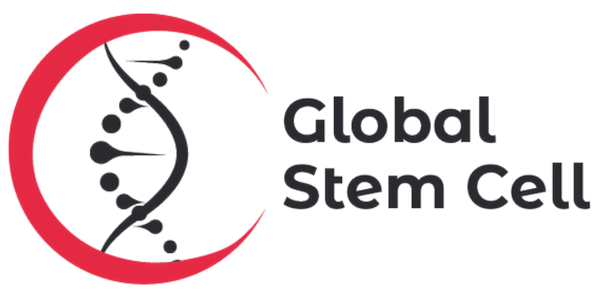The Power of Stem Cells with Embryonic Stem Cell Therapy
Table of Content
Embryonic Stem Cell Therapy. In this video you will be informed on how stem cells are used and what is the power of embryonic stem cell therapy, procedures of stem cell treatment and also how stem cells are created and procured from embryos. Centers for embryonic stem cell therapy
Embryonic stem cell therapy harnesses the remarkable potential of stem cells derived from early-stage embryos. These cells, obtained from embryos resulting from in-vitro fertilization with informed donor consent, hold transformative promise. They are not, as often misunderstood, taken from embryos within women’s bodies. Ethical debates notwithstanding, the impact of this therapy could revolutionize medical landscapes.
Embryonic stem cell research offers a unique avenue to decode the enigmas of diseases like Alzheimer’s, Parkinson’s, leukemia, cancers, and diabetes, potentially yielding groundbreaking treatments. Across the globe, research institutions, exemplified by the University of Wisconsin, are spearheading advancements.
They’ve pioneered techniques to isolate and cultivate these cells, propelling medical exploration forward. The spectrum of applications is vast – spanning from diabetes and kidney ailments to mental disorders, cardiac care, and spinal cord injuries. The prospects are limitless. To embark on a journey of understanding, feel free to delve deeper and discover more. The realm of embryonic stem cell therapy is a realm of boundless potential.
Video Summary
Embryonic stem cells, derived from early-stage embryos, present a unique avenue for medical advancement.
Contrary to common misconceptions, these cells are sourced from embryos resulting from in-vitro fertilization, with the donors’ informed consent.
Importantly, they are not taken from embryos within a woman’s body. While ethical debates surround their use, the potential benefits are striking.
Embryonic stem cell research holds the key to unraveling the mysteries of diseases like Alzheimer’s, Parkinson’s, leukemia, cancers, and diabetes, potentially leading to revolutionary treatments.
Stem cell research facilities, including the University of Wisconsin, have made significant headway, devising methods to isolate and cultivate these cells for medical exploration.
The scope of their potential applications spans from diabetes and kidney diseases to mental disorders, cardiac care, and even spinal cord injuries.
If you’re intrigued to delve deeper, don’t hesitate to reach out for more information – the promise of embryonic stem cell research is indeed limitless.
Unveiling the Power of Stem Cells – Embryonic Stem Cell Therapy
In the realm of medical science, few advancements have captured our imagination and potential quite like stem cells. These remarkable cells hold the key to unlocking a new era of regenerative medicine, offering unprecedented opportunities to treat a wide array of diseases and injuries.
At the forefront of this revolutionary field lies Embryonic Stem Cell Therapy, a groundbreaking approach that harnesses the remarkable potential of embryonic stem cells to rejuvenate and repair damaged tissues. In this comprehensive exploration, we delve into the world of stem cells, shedding light on their potential, their significance, and how Embryonic Stem Cell Therapy stands as a beacon of hope for countless patients worldwide.
Understanding the Essence of Stem Cells
Stem cells are undifferentiated cells with a unique ability to develop into various specialized cell types in the body. They possess the extraordinary capacity for self-renewal and differentiation, making them a critical component of growth, development, and tissue repair. Stem cells can be broadly categorized into two main types: embryonic stem cells and adult stem cells.
Stem cells are unique and remarkable cells that have the potential to develop into various types of specialized cells in the body. They play a crucial role in the development, growth, repair, and maintenance of tissues and organs throughout our lives.
There are several key characteristics that define stem cells:
- Self-Renewal: Stem cells have the ability to divide and produce identical copies of themselves, a process known as self-renewal. This property ensures a constant supply of undifferentiated stem cells for future use.
- Differentiation: Stem cells can differentiate into specialized cell types with specific functions. This process is guided by complex molecular signals and cues from the surrounding environment. There are different levels of differentiation potential among stem cells
- Potency: The potency of a stem cell refers to its potential to differentiate into different cell types. The broader the range of cell types a stem cell can become, the higher its potency.
- Sources: Stem cells can be found in various sources, including embryos (embryonic stem cells), fetal tissues, and adult tissues. In recent years, induced pluripotent stem cells (iPSCs) have been developed, which are adult cells that have been reprogrammed to revert to a pluripotent state.
Stem cells wide range of applications in medicine and research
Stem cells are remarkable cells with the potential to transform the field of medicine and our understanding of development and diseases. Their ability to self-renew and differentiate into various cell types holds immense promise for regenerative therapies and advances in biomedical research.
- Regenerative Medicine: Stem cells can be used to repair damaged or diseased tissues and organs. For instance, they hold the potential to replace damaged heart muscle after a heart attack or restore nerve function in spinal cord injuries.
- Drug Testing and Disease Modeling: Stem cells can be used to create models of diseases in a controlled environment. This enables researchers to study disease progression, test potential therapies, and develop new drugs.
- Understanding Development: By studying how stem cells differentiate and develop into different cell types, scientists can gain insights into normal development and the causes of developmental disorders.
- Transplants and Therapies: Stem cell transplants are used to treat conditions like leukemia and other blood disorders. Hematopoietic stem cell transplantation is a well-established therapy for these conditions.
Embryonic Stem Cells: A Window into Regeneration
Embryonic stem cells are derived from embryos at a very early stage of development. These cells are pluripotent, meaning they can differentiate into any cell type in the human body. This remarkable plasticity has positioned embryonic stem cells as a central focus of regenerative medicine. Scientists and researchers envision a future where these cells could be used to replace damaged or diseased tissues, offering renewed hope for conditions that were previously considered untreatable.
Embryonic stem cells (ESCs) are a type of pluripotent stem cell that holds immense potential in the field of regenerative medicine. These cells are derived from the inner cell mass of a developing embryo during the blastocyst stage, which is typically around five to seven days after fertilization.
ESCs are unique due to their pluripotent nature, meaning they have the remarkable ability to differentiate into cells of all three primary germ layers: ectoderm, endoderm, and mesoderm. This potential gives them the capacity to develop into virtually any cell type found in the human body. Because of this versatility, embryonic stem cells offer a “window” into the process of development and tissue regeneration.
The Promise of Embryonic Stem Cell Therapy
Embryonic Stem Cell Therapy is a groundbreaking medical approach that leverages the potential of embryonic stem cells to treat a range of debilitating conditions. From neurological disorders like Parkinson’s disease to degenerative conditions like spinal cord injuries, this therapy holds the promise of restoring lost function and improving the quality of life for patients around the world.
Unparalleled Regenerative Potential
One of the most captivating aspects of embryonic stem cells is their regenerative potential. Unlike adult stem cells, which have limitations in terms of differentiation, embryonic stem cells are a wellspring of versatility. This makes them an ideal candidate for generating replacement cells or tissues. The ability to grow specific cell types in a controlled environment brings us closer to personalized medicine, where tailor-made treatments can be developed for individual patients.
Overcoming Challenges and Ethical Considerations
While the potential of embryonic stem cells is awe-inspiring, it is not without its challenges. One of the most significant hurdles has been the ethical considerations surrounding their use. The extraction of embryonic stem cells involves the destruction of embryos, raising profound ethical questions. However, recent advancements have led to the development of techniques that do not harm the embryo, thereby mitigating some of these concerns.
The Ongoing Journey of Research and Discovery
The field of stem cell research is a dynamic landscape that continues to evolve at a rapid pace. Scientists and researchers are dedicated to unraveling the mysteries of these remarkable cells, refining techniques, and expanding the scope of potential applications. As our understanding deepens, new avenues for therapeutic interventions emerge, offering renewed hope for patients who had previously exhausted all options.
Final Thoughts
In the grand tapestry of medical science, few advancements hold as much promise and potential as Embryonic Stem Cell Therapy. The ability to harness the regenerative power of embryonic stem cells opens doors to a future where previously incurable conditions may find a remedy. While challenges remain, the relentless pursuit of knowledge and innovation propels us toward a world where healing and restoration know no bounds.
Book Appointment
Discover the potential of embryonic stem cells in regenerative medicine! Dive into their pluripotent nature, disease modeling, and promise for treating various conditions. Unveil the science behind regeneration today


